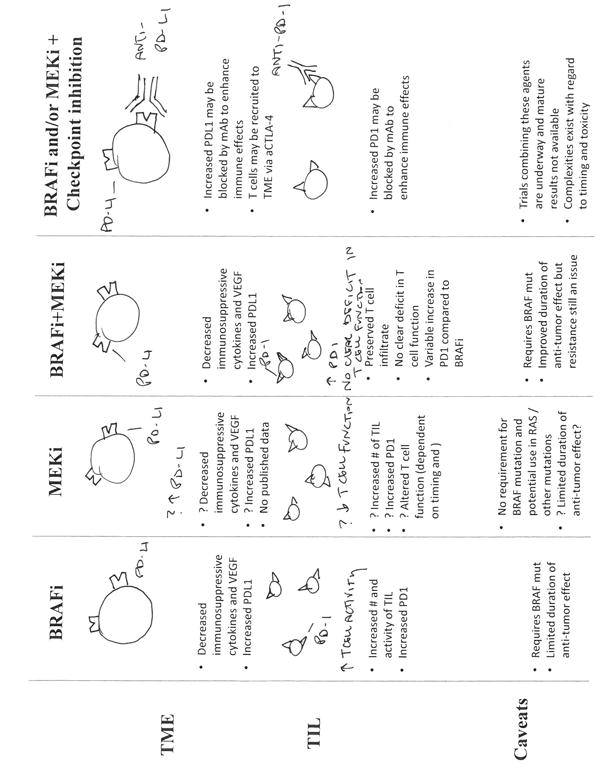Figure 1.

Immune effects of targeted therapy and the potential of adding immune checkpoint blockade. Treatment with a BRAF inhibitor results in favorable effects such as an increase in antigen expression and CD8+ T cell infiltrate and a decrease in immunosuppressive cytokines and VEGF. However concurrently, there is an increase in expression of immunomodulatory molecules (PD-1 and PD-L1). Importantly, this therapy requires a BRAFV600E mutation and the anti-tumor effect is limited. Treatment with MEKi monotherapy is not as well studied as there is no published data on immune effects of MEKi on the tumor microenvironment in melanoma patients, however, in vitro studies suggest a transient altered phenotype in T-cells after MEKi monotherapy. In MEKi monotherapy, there is no requirement for a BRAF mutation and MEKi can be used in non-BRAF (e.g., RAS) mutant tumors. Treatment with combined BRAFi + MEKi has the same favorable effects of BRAFi, with similar changes in PD-1 and PD-L1 expression. The addition of immune checkpoint blockade to a backbone of BRAFi and/or MEKi is hypothesized to enhance immune response and overall response to therapy via recruitment and activation of TIL (anti-CTLA-4) and through blocking of PD-1 or its ligand.
